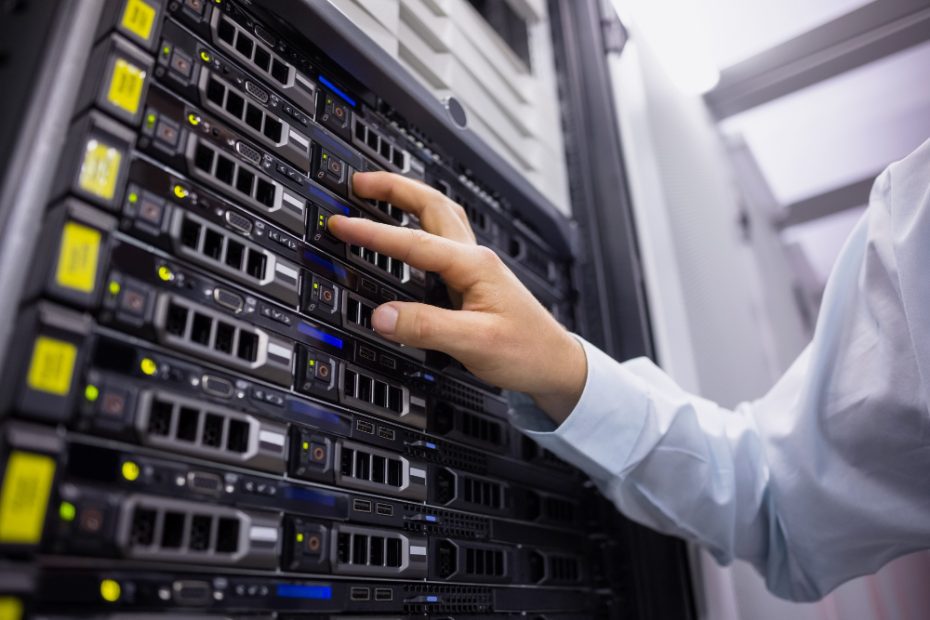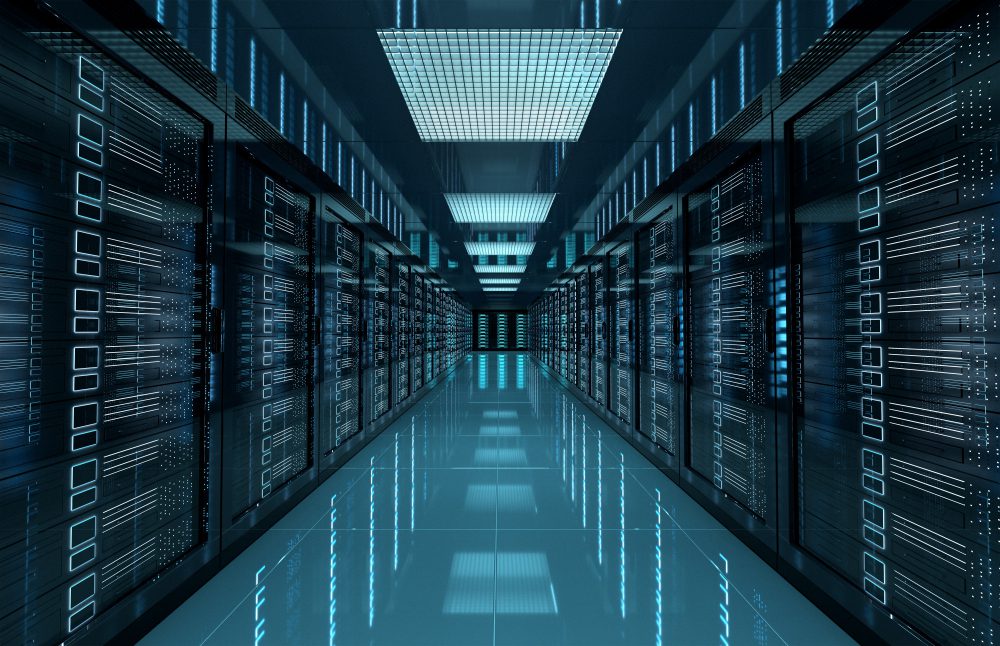What is a NAS and why do I need one?
A Network Attached Storage (NAS) device is a specialized computer appliance that is designed to store and share files over a network. It is essentially a dedicated file storage system that provides centralized data management and access for multiple users and devices. NAS devices are commonly used in both home and business environments, offering a range of benefits and features that make them an essential tool for many individuals and organizations.
The Basics of NAS
At its core, a NAS device consists of one or more hard drives housed in a compact enclosure, connected to a network through wired or wireless connections. These devices are typically equipped with their own operating systems and software, making them independent file servers that provide file-level access to users across the network.
One of the primary advantages of NAS is its ability to create a centralized storage solution for all connected devices. Instead of storing files on individual computers or external hard drives, NAS allows users to store and access files from a single location, accessible by any device connected to the network. This not only simplifies data management, but also improves collaboration and sharing capabilities among users.
Benefits of NAS
1. Data Redundancy and Backup: NAS devices often support various RAID configurations, providing data redundancy and protection against drive failures. This means that even if one or more drives fail, your data remains safe and accessible. Additionally, NAS devices can be set up to automatically back up important files and folders, ensuring that your data is always protected.
2. Centralized File Sharing: With a NAS device, you can easily share files and documents with other users on the network. Whether it’s a family sharing photos and videos, or a team collaborating on a project, NAS simplifies file sharing by providing a central repository that can be accessed by authorized users from anywhere.
3. Media Streaming and Entertainment: Many NAS devices come with built-in media server capabilities, allowing you to stream music, videos, and photos to connected devices like smart TVs, gaming consoles, and mobile devices. This transforms your NAS into a multimedia hub, providing a convenient way to access and enjoy your media collection.
Choosing the Right NAS
When selecting a NAS device, there are several factors to consider:
- Storage Capacity: Determine how much storage space you require, based on your current and future needs. NAS devices come in various configurations, offering different levels of storage capacity.
- RAID Configuration: Consider whether you need RAID functionality for data redundancy and backup. Different RAID levels offer varying degrees of protection, so choose one that suits your requirements.
- Connectivity: Look for a NAS device that offers the appropriate network connectivity options, such as Ethernet ports or built-in Wi-Fi, depending on your network setup.
- Software and Features: Research the available software and features offered by different NAS vendors. Some devices provide more advanced functionalities like remote access, cloud integration, and even surveillance capabilities.
In conclusion, a NAS device serves as a reliable and efficient solution for storing, accessing, and sharing files across a network. Whether you need a simple file server for your home or a robust storage solution for your business, investing in a NAS can greatly enhance your data management capabilities and improve collaboration among users.
Can you use normal drives in a NAS?
Introduction
A Network Attached Storage (NAS) device provides a centralized storage solution for individuals and businesses alike. One common question that arises is whether it is possible to use normal drives instead of specialized NAS drives. In this article, we will explore the implications of using normal drives in a NAS.
Compatibility and Performance
NAS drives are specifically designed to meet the demands of continuous operation in a NAS environment. They are built with features such as vibration resistance, error recovery control, and power management. While normal drives may physically fit into a NAS, they lack these specialized features, which can lead to compatibility issues and reduced performance.
Data Integrity and Reliability
NAS drives come with advanced technologies like RAID (Redundant Array of Independent Disks) support, which allows for data redundancy and protection against drive failures. Normal drives may not offer the same level of reliability and can potentially compromise the integrity of your data. It is crucial to consider the importance of data integrity and invest in NAS-grade drives if optimal reliability is desired.
Warranty and Support
Another aspect to consider when choosing drives for your NAS is warranty and support. NAS drives usually come with longer warranties and dedicated customer support, specifically tailored for NAS applications. This can be invaluable if you encounter any issues or need assistance. Normal drives may not offer the same level of warranty coverage or specialized support for NAS-related concerns.
Cost Considerations
It’s true that NAS drives tend to be more expensive than normal consumer-grade drives. However, when weighing the cost, it’s important to consider the potential risks and drawbacks associated with using normal drives in a NAS. The cost of data loss or system failure due to incompatible drives can far outweigh the initial savings of opting for cheaper alternatives.
How can I use NAS at home?
Introduction
A Network-Attached Storage (NAS) device is a great addition to any home network. It provides a centralized storage solution for all your digital files while offering various features like data backup, media streaming, and remote access. In this article, we will explore how you can utilize NAS at home and make the most out of its functionality.
Centralized Storage
One of the primary benefits of a NAS device is the ability to centralize your storage. Instead of storing files on individual computers, you can store them on your NAS, enabling easy access from any device in your home network. With a NAS, you no longer have to worry about running out of storage space on your computer or transferring files between devices.
Data Backup
NAS devices also offer robust data backup solutions. You can set up automatic backups of your important files, ensuring that you never lose any data. Whether it’s family photos, important documents, or personal videos, a NAS can provide peace of mind by keeping your data safe and secure.
Media Streaming
If you have a collection of movies, music, or photos, a NAS can become a media hub for your home. Many NAS devices come with built-in media server applications, allowing you to stream content directly to your smart TV, gaming console, or mobile devices. Enjoy your favorite movies and music without worrying about limited storage space on your local devices.
Remote Access
Another fantastic feature of NAS devices is the ability to access your files remotely. By setting up the appropriate network configurations, you can securely access your NAS and its contents from anywhere in the world. This is especially useful when you need to retrieve a file while away from home or share documents with others.
Can I use NAS for surveillance?
Introduction
Network-Attached Storage (NAS) has long been a popular choice for storing and managing large amounts of data. But can it also be used for surveillance purposes? In this article, we will explore the capabilities of NAS when it comes to surveillance applications.
NAS for Surveillance
Yes, NAS can indeed be used for surveillance. With the right software and hardware configuration, a NAS can function as a central hub for storing and managing video footage captured by surveillance cameras. Some NAS systems even come with built-in surveillance applications and interfaces, making the setup process easier.
The Advantages of Using NAS for Surveillance
- Cost-Effective: Using NAS for surveillance eliminates the need for separate dedicated servers, saving on both hardware and maintenance costs.
- Scalability: NAS systems often offer expandable storage capacities, allowing for easy scalability as your surveillance needs grow.
- Centralized Management: By using NAS, you can centrally manage all your surveillance footage, making it easier to access, search, and analyze.
The Importance of Hardware and Software
When using NAS for surveillance, it is crucial to choose the right hardware and software combination. The NAS should have enough processing power and storage capacity to handle the amount of video data being generated by the surveillance cameras. Additionally, selecting software that provides robust surveillance features and reliable recording capabilities is essential.
Considerations for Choosing a NAS System
- Storage Capacity: Ensure that the NAS system has enough storage capacity to accommodate your surveillance needs. Consider the number of cameras, expected footage retention period, and desired video quality.
- Compatibility: Check if the NAS system is compatible with the surveillance cameras you are planning to use. Look for support for common surveillance protocols and video formats.
- Redundancy: Consider a NAS system that provides redundancy options such as RAID configurations or built-in backup functionality to prevent data loss.
Note: It is crucial to consult the manufacturer’s specifications and recommendations when selecting a NAS system for surveillance purposes.
Does NAS have to be plugged into router?
When setting up your Network-Attached Storage (NAS) device, you might wonder if it needs to be directly connected to your router. The short answer is no, a NAS does not necessarily have to be plugged directly into a router, but there are various factors to consider.
Benefits of connecting NAS to the router:
Plugging your NAS directly into the router offers several advantages. Firstly, it allows for a faster and more reliable data transfer between the NAS and other devices on your network. Additionally, it simplifies the setup process as most routers have built-in features for accessing and configuring NAS devices.
Alternative connection methods:
Despite the benefits, it is possible to connect a NAS to your network without plugging it directly into the router. One option is to connect the NAS to a network switch, which expands the number of available Ethernet ports on your network. This can be useful if your router has limited ports or if you want to place the NAS in a different location.
Another method is using Powerline adapters, which utilize your existing electrical wiring to extend the network connection. This allows you to connect the NAS to an electrical outlet in a different room while still benefiting from a wired connection.
Considerations for wireless connections:
If you prefer a wireless connection for your NAS, you can connect it to your router using Wi-Fi. However, it’s important to note that wireless connections may not offer the same level of speed and reliability as wired connections. If you plan on transferring large files or streaming media from the NAS, a wired connection is usually recommended.
Tip: Before deciding on the connection method, consider factors such as the distance between the NAS and the router, the number of devices on your network, and the intended use of the NAS.
In summary, while it is not necessary to directly plug a NAS into a router, doing so can provide faster and more reliable performance. However, there are alternative methods such as using a network switch or Powerline adapters that allow for flexibility in placement. Ultimately, the choice depends on your specific needs and preferences.
What is the Purpose of NAS Server?
A NAS (Network Attached Storage) server is a device that provides centralized storage and data management for multiple devices on a network. It is designed to serve files, documents, media, and other digital content to connected devices such as computers, smartphones, and tablets. The purpose of a NAS server is to simplify data storage, backup, and sharing for both home users and businesses.
Data Storage and Backup
One of the key purposes of a NAS server is to provide a reliable and secure storage solution for data. With a NAS server, users can store all their important files, documents, photos, videos, and other digital content in one central location. This eliminates the need for individual storage devices on each device and allows for easy access and management of data.
In addition to storage, NAS servers also offer backup functionality. They can automatically back up data from connected devices, ensuring that important files are protected in case of hardware failure or accidental deletion. Users can schedule regular backups and easily restore files if needed.
File Sharing and Collaboration
Another purpose of a NAS server is to facilitate file sharing and collaboration among users on the network. With a NAS server, users can create shared folders and grant access permissions to specific individuals or groups. This allows for seamless collaboration on projects, as multiple users can work on and access the same files simultaneously.
Furthermore, NAS servers often offer remote access capabilities, enabling users to access their files from anywhere with an internet connection. This is particularly useful for businesses with remote employees or individuals who frequently travel.
Media Streaming and Entertainment
A NAS server can also function as a media server, allowing users to stream multimedia content such as music, videos, and photos to different devices within the network. Many NAS servers support popular media streaming protocols and can be connected to smart TVs, gaming consoles, and media players.
By centralizing media storage and streaming, NAS servers eliminate the need for individual external hard drives or online streaming services. Users have complete control over their media library and can easily access and enjoy their content on various devices.
Overall, the purpose of a NAS server is to provide convenient and efficient storage, backup, sharing, and streaming solutions for home users and businesses alike. With its versatile features and functionalities, a NAS server is an essential tool for managing digital content in today’s connected world.
Conclusion
While it is technically possible to use normal drives in a NAS, it is generally recommended to use NAS-specific drives for optimal compatibility, performance, data integrity, and reliability. The specialized features and support provided by NAS drives outweigh the potential cost savings of using normal drives. When investing in a NAS, it is worth considering the long-term benefits and peace of mind that come with using the right drives for the job.
A NAS device opens up a world of possibilities for home network storage. From centralized storage to data backup, media streaming, and remote access, it offers a range of features that can greatly enhance your digital lifestyle. Consider investing in a NAS device to streamline your home network and take control of your data.
Using NAS for surveillance can be a cost-effective and efficient solution, providing centralized management and scalability. However, careful consideration should be given to hardware and software choices to ensure optimal performance and compatibility with your surveillance setup.



